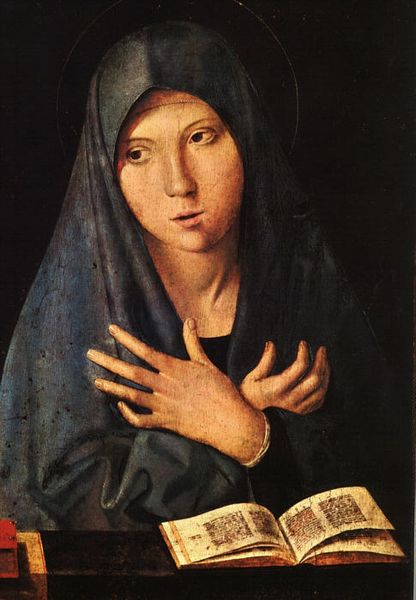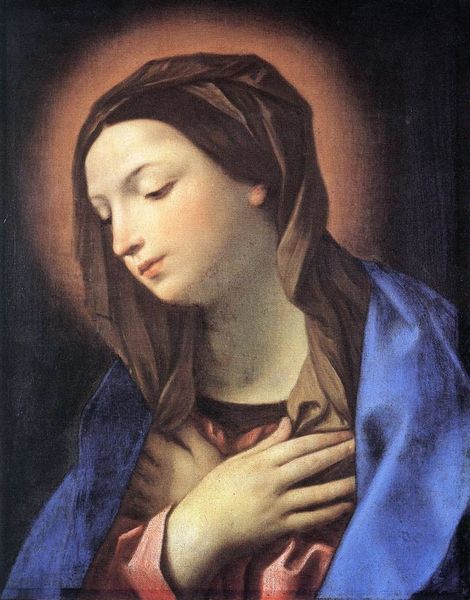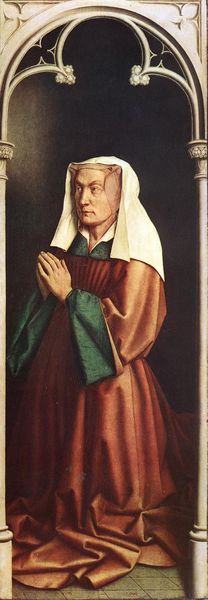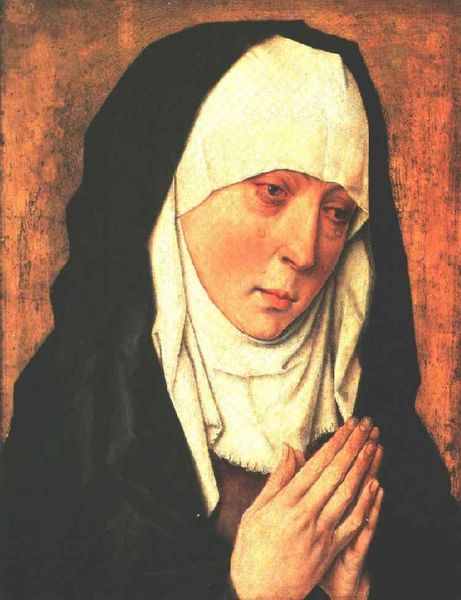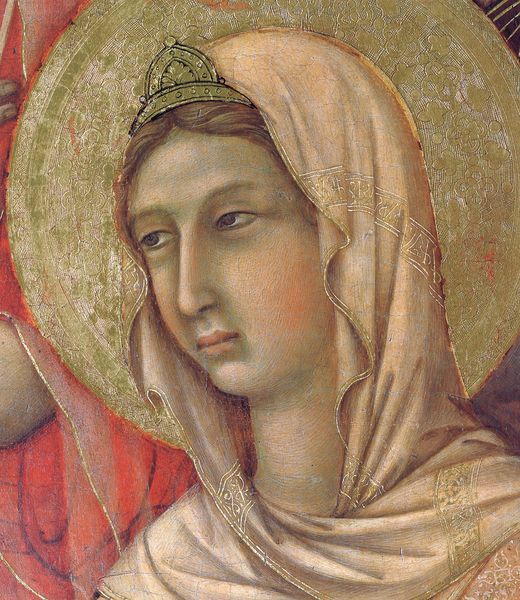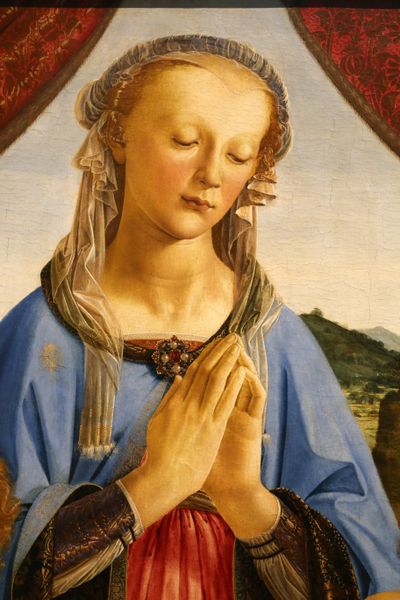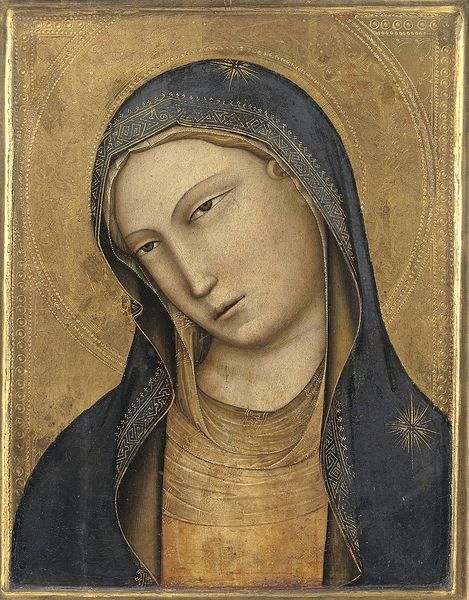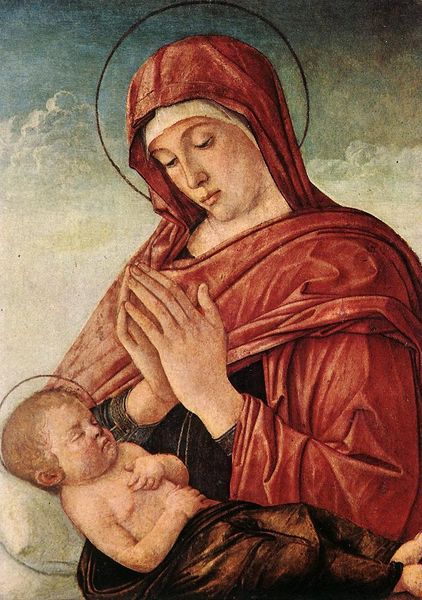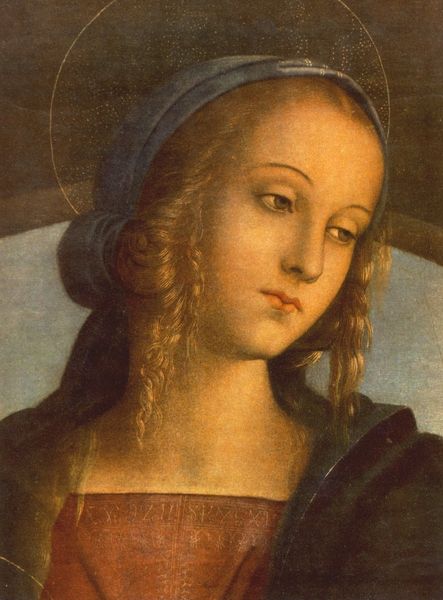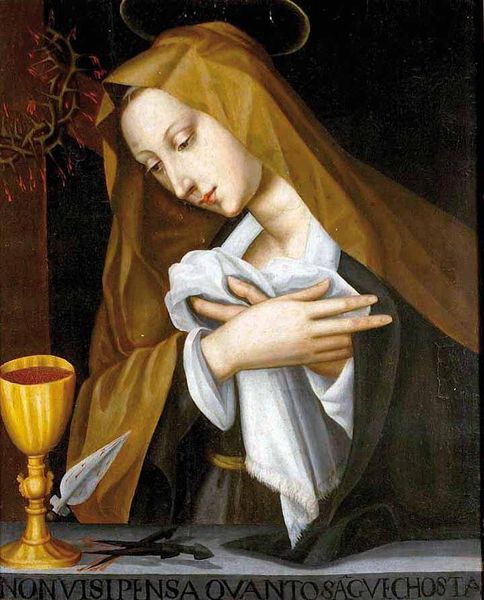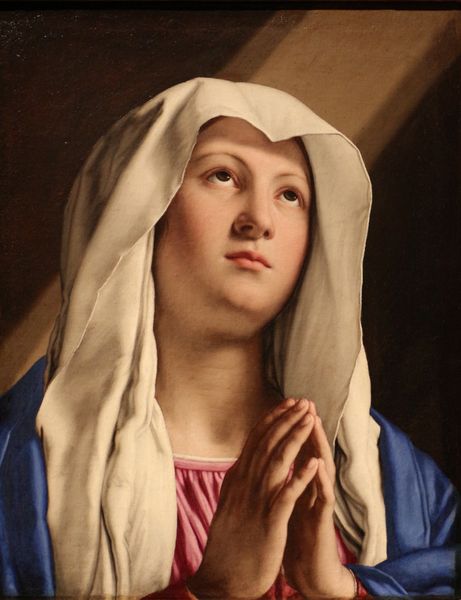
#
oil painting
#
portrait reference
#
acrylic on canvas
#
portrait head and shoulder
#
christianity
#
animal drawing portrait
#
portrait drawing
#
facial portrait
#
lady
#
portrait art
#
virgin-mary
#
fine art portrait
#
christ
#
digital portrait
Copyright: Public domain
Editor: Here we have "The Virgin Mary in Prayer," painted by Albrecht Dürer in 1518, in oil. It strikes me as very serene, especially the soft lighting on her face. What aspects of its historical context or public reception stand out to you? Curator: Dürer, celebrated for his prints, actively shaped his artistic image. He consciously cultivated his public persona. Consider, in this image, the subtle elevation of Mary, looking upward. What might that upward gaze signify to a 16th-century audience? Editor: Maybe hope, or divine connection? It feels very deliberate, almost staged, now that you point it out. Curator: Exactly. Think about the Reformation brewing during that time. Images were powerful tools, not just for devotion, but for religious and political statements. Do you see how Dürer is navigating that complex landscape through this painting? Editor: So, the apparent simplicity is actually loaded with meaning, reflecting the tensions of the time. The act of painting itself becomes a political statement of sorts. Curator: Precisely. Artists weren't just creating objects of beauty, they were actively participating in shaping cultural narratives and religious identities. Considering that Dürer himself had humanist leanings, where does this information situate him within society during this turbulent historical moment? Editor: I see. Looking closer, I am struck by the detail with which Dürer painted the face of Mary, making me feel close to the divine. Thanks. Curator: Examining artwork this way helps us better understand our present by giving context to the past. Thanks.
Comments
No comments
Be the first to comment and join the conversation on the ultimate creative platform.
